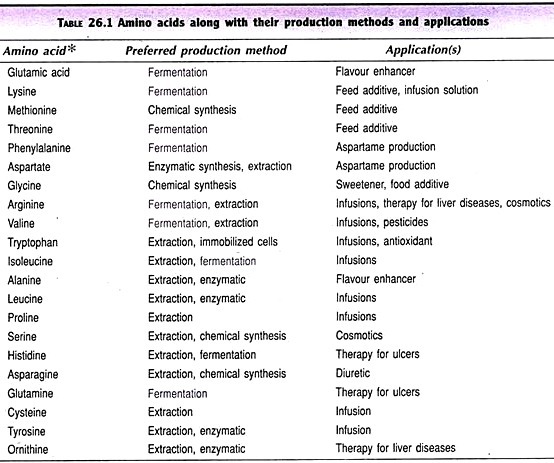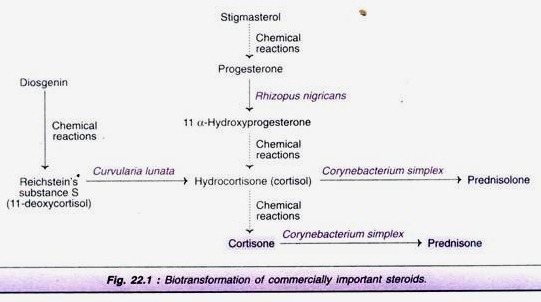ADVERTISEMENTS:
This article throws light upon the five principal methods used for creation of transgenic animals.
The five principal methods are: (1) Physical Transfection (2) Chemical Transfection (3) Retrovirus-Mediated Gene Transfer (4) Virus Vector and (5) DNA Packaged inside a Bacterium.
Method # 1. Physical Transfection:
This method involves the direct microinjection of a chosen gene construct (a single gene or a combination of genes) from another member of the same species or from a different species, into the pro-nucleus of a fertilized ovum.
ADVERTISEMENTS:
It is one of the first methods that proved to be effective in mammals. The introduced DNA may lead to the over- or under-expression of certain genes or to the expression of genes entirely new to the animal species (Fig. 18.2).
The insertion of DNA is, however, a random process, and there is a high probability that the introduced gene will not insert itself into a site on the host DNA that will permit its expression. The manipulated fertilized ovum is transferred into the oviduct of a recipient female or foster mother that has been induced to act as a recipient by mating with a vasectomized male.
A major advantage of this method is its applicability to a wide variety of species. Other transfection methods include particle bombardment, ultrasound and electroporation.
Method # 2. Chemical Transfection:
There are several chemical transfection techniques for animal cells but all are based on similar principles. The calcium phosphate mediated DNA uptake involves the formation of a co-precipitate which is taken up by endocytosis. The ability of mammalian cells to take up exogenous DNA from the cultured medium was first reported in 1962.
Formation of a fine DNA and calcium phosphate co-precipitate (should be prepared fresh) facilitates DNA uptake by endocytosis. Some of the DNA fragments which enter the cell may reach the nucleus and integrated.
Expression of such genes confers the transfection. The transformation frequency of calcium precipitate method is generally low (1-2%), therefore use of soluble complexes (polyplexes) or liposomes and lipoplexes (fusogenic) phospholipid are used to package DNA inside these vehicles. The desired gene is transferred in plasmid and it may be used directly for chemical transfection or inserted in a bacterium for delivery into a mammalian cell. Yeast cells with the cell wall removed (spheroplast) therefore have been used to introduce YAC DNA into mouse, using liposomes and embryonic stem cells for the production of YAC transgenic mice.
Method # 3. Retrovirus-Mediated Gene Transfer:
To increase the probability of expression, gene transfer is mediated by means of a carrier or vector, generally a virus or a plasmid. Retroviruses are commonly used as vectors to transfer genetic material into the cell, taking advantage of their ability to infect host cells in this way. Offspring derived from this method are chimeric, i.e., not all cells carry the retrovirus. Transmission of the transgene is possible only if the retrovirus integrates into some of the germ cells and forms rPIC complex (Fig 18.3).
For any of these techniques the success rate in terms of live birth of animals containing the trans-gene is extremely low. Providing that the genetic manipulation does not lead to abortion, the result is a first generation (F1) of animals that need to be tested for the expression of the trans-gene. Depending on the technique used, the F1 generation may result in chimeras.
When the trans-gene has integrated into the germ cells, the so-called germ line chimeras are then inbred for 10 to 20 generations until homozygous transgenic animals are obtained and the trans-gene is present in every cell. At these stage embryos carrying the trans-gene can be frozen and stored for subsequent implantation.
There have been numerous reports and applications of transgenic plants in agriculture, mainly to benefit the producer. However, the realization of genetically engineered livestock has been much slower. The production of transgenic animals has focused mainly on producing models (e.g., the mouse) for basic and medical research.
In terms of commercially important livestock species, work has revolved around specialized non-agricultural purposes such as pharmaceutical production and xenotransplantation and, to a lesser extent, applied agricultural purposes to improve animal production traits and animal-food products. In this case, one of the most important production animals, the dairy cow, was given enhanced resistance to a common and often devastating infection of the mammary gland, a potential benefit to both the producer and the animal’s well-being.
Method # 4. Virus Vector:
Viruses have a natural ability to absorb to the surface of host cells and infect. This property can be exploited to deliver rDNA into animal cells. The viral system is efficient in transfer, expressed well and replicate rapidly in the host cells. Several classes of viral vectors have been developed for use in human gene therapy and at least eight have been used in clinical trials.
The General Properties of Viral Vector Are:
ADVERTISEMENTS:
1. Trans-gene may be incorporated into viral vectors as additional gene or as replacement to certain genes of viral genome by ligation or homology recombination. If virus can propagate independently it is called helper independent. If essential viral genes are replaced by trans-gene then virus need a replication gene in Trans position (another virus similar to binary vectors) and virus is called ‘helper-dependent’.
2. It is necessary to prevent replication as well as recombination of helper virus. Icosahedral viruses such as adenovirus and retroviruses package their genome into preformed capsid, their volume is fixed with defined amount of DNA can be packaged. Rod shaped baculo-viruses form the capsid around the genome, so there are no such size constraints. There is no ideal virus, each has his own advantages or disadvantages.
Adenoviruses are DNA viruses with a linear, double stranded genome of approx. 36 kb. They are used in gene transfer because they show some advantageous features like stability, a high capacity for foreign DNA, a wide host range that includes non dividing cells and the ability to produce high titer stock (up to 1011 pfu/ml). They are suitable for transient expression in dividing cells because they do not integrate efficiently into the genome.
ADVERTISEMENTS:
Adenoviruses are also used as gene therapy vectors because the virions are taken up efficiently by cells in vivo and adenovirus derived vaccines have been used in humans with no reported side effects. Baculo-viruses have large double stranded DNA genomes. They efficiently infect arthropods, particularly insects. Nuclear polyhedrosis viruses, a group of baculoviruses, have an unusual infection cycle that involves the production of nuclear occlusion bodies. These are pro-teinaceous particles in which the virions are embedded allowing the virus to survive harsh environmental conditions such as desiccation.
Baculo-viruses are mainly used for high level transient protein expression in insects and insect cells. Two baculoviruses have been extensively developed as vectors, namely the Autographa calofornica multiple nuclear polyhedrosis virus and the Bombyx mori nuclear polyhedrosis virus.
Method # 5. DNA Packaged inside a Bacterium (Bactofection):
Generally, Agrobacterium tumefaciens mediated transfer of DNA is a common practice in plant system. It has been shown by Kunik and co -workers (2001) that this bacterium can transfer DNA in cultured human cells. It was established in mid-1990 that several bacteria infect human cells and undergo lysis releasing plasmid in host cells e.g., Salmonella spp., Listeria spp. and Shigella spp. The plasmid DNA then finds its way to the host cell nucleus, where it is integrated in the genome and expressed.
Another method of DNA transfer is by conjugation [the transfer of DNA through a pilus (plural pilli)]. This pilus is formed by bacterial cell. When live bacteria are used, it is necessary that the bacteria are attenuated. This is because the gene transfer system uses the natural ability of bacteria to infect eukaryotic cells. The bacteria may multiply and destroy host cells.
ADVERTISEMENTS:
Application Possibilities for Gene Transfer:
In recent years, several application possibilities for gene transfer in domestic animals have been discussed. Until now it has been possible to influence only traits that are based on a single gene or on a limited number of genes. There are only a very limited number of traits of interest to breeders, which are based on a single gene. Various markers used to identify the transgenic animals are presented in Table 18.1.
In these authors’ well-known experiments, growth, one of the classical quantitative traits in animal breeding, was changed to become a quasi-qualitative trait through the transfer of a single growth hormone gene which was related to a feedback independent regulation mechanism. Similar consequences can be expected by application of somatotropins in dairy cattle.
ADVERTISEMENTS:
As far as gene transfer in cattle is concerned, there are realistic prospects that it will be possible to influence positively different production traits. Traditional selection programmes using conventional breeding techniques have achieved important results and will continue to do so.
However, it seems preferable to concentrate the very expensive and complex technique of gene transfer to fields which until now could only be improved with limited success through conventional breeding programmes, such as breeding for increased disease resistance.




